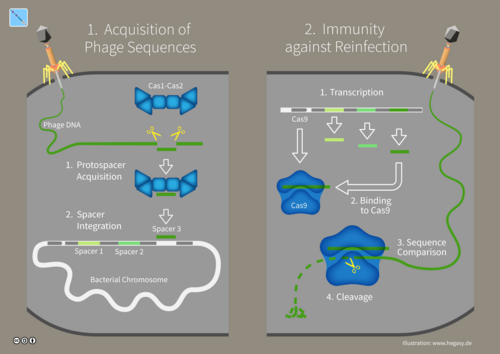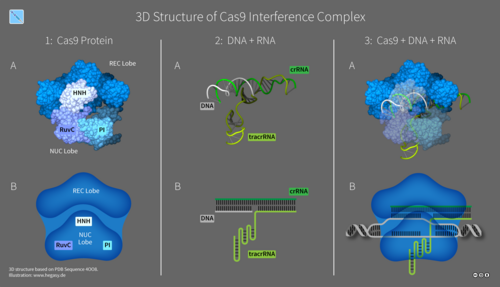.jpeg&w=3840&q=75)
CRISPR: The Future of Genetic Medicine and Its Impact on Healthcare
7/30/2024
Scroll to read
CRISPR, an acronym for "Clustered Regularly Interspaced Short Palindromic Repeats," represents a groundbreaking advancement in genetic engineering. This technology, which allows for precise and targeted modifications to DNA, has the potential to revolutionize the field of genetic medicine. Since its discovery, CRISPR has rapidly moved from the laboratory to clinical applications, offering hope for curing genetic disorders that were once considered untreatable. This blog post will explore the latest developments in CRISPR technology, its FDA-approved treatments, and its potential to transform healthcare.
The Breakthroughs in CRISPR Technology
FDA-Approved Treatments
The U.S. Food and Drug Administration (FDA) has recently approved several CRISPR-based treatments, marking significant milestones in genetic medicine. In August 2023, the FDA approved Casgevy and Lyfgenia, the first cell-based gene therapies for treating sickle cell disease (SCD) in patients aged 12 and older. Casgevy, developed by Vertex Pharmaceuticals, is particularly notable as it is the first FDA-approved therapy utilizing CRISPR/Cas9 technology. This treatment modifies patients' blood cells to increase hemoglobin production, effectively reducing the symptoms of SCD.
In January 2024, the FDA also approved Casgevy for treating transfusion-dependent beta thalassemia (TDT), a serious genetic disorder that hinders hemoglobin production. This approval underscores the versatility and potential of CRISPR technology in treating various genetic disorders.

Clinical Trials and Success Stories
Clinical trials have demonstrated the efficacy of CRISPR-based treatments. For instance, a study involving 31 patients with SCD showed that 29 of them experienced no vaso-occlusive crises for a year after receiving the CRISPR treatment. Similarly, 25 of 27 individuals with TDT were no longer transfusion-dependent following the treatment, with some maintaining this status for over three years.
These success stories highlight the transformative potential of CRISPR technology. Patients who once faced lifelong symptoms and frequent hospitalizations can now look forward to a future free from these burdens.
The Science Behind CRISPR
CRISPR technology works by utilizing the Cas9 protein, guided by RNA, to make precise cuts in the DNA at specific locations. This allows scientists to either disable a faulty gene or insert a new, functional gene. The precision and efficiency of CRISPR make it a powerful tool for genetic engineering, surpassing older methods in both accuracy and ease of use.

Potential to Cure Genetic Disorders
Sickle Cell Disease and Beta Thalassemia
Sickle cell disease and beta thalassemia are among the first genetic disorders to be targeted by CRISPR-based treatments. These conditions, which affect hemoglobin production, can lead to severe health complications and require frequent medical interventions. CRISPR offers a one-time treatment that can potentially cure these diseases by editing the genes responsible for hemoglobin production.
Expanding Horizons
The success of CRISPR in treating SCD and TDT has opened the door to exploring its use in other genetic disorders. Researchers are currently conducting trials for various conditions, including severe combined immunodeficiency (SCID), cystic fibrosis, and certain types of cancer. The ability to precisely edit genes means that CRISPR could eventually be used to treat a wide range of genetic disorders, offering hope to millions of patients worldwide.
Ethical Considerations and Challenges
While the potential of CRISPR is immense, it also raises significant ethical and safety concerns. One of the primary risks is off-target editing, where CRISPR may inadvertently alter unintended parts of the genome, potentially leading to harmful effects such as cancer. Additionally, the high cost of CRISPR treatments, estimated to be between $2 to $3 million, poses a barrier to widespread access.
There are also ethical debates surrounding germline editing, which involves making changes to the DNA of embryos. This type of editing could prevent genetic disorders from being passed on to future generations but also raises concerns about the potential for "designer babies" and unintended consequences.
.jpeg)
Future Projections and Trends
Emerging Applications
Beyond treating genetic disorders, CRISPR technology is being explored for various other applications. For instance, researchers are investigating its use in developing new cancer therapies, improving agricultural crops, and even combating infectious diseases like HIV. The versatility of CRISPR makes it a valuable tool across multiple fields of research and medicine.
Simplifying CRISPR Delivery
One of the current challenges with CRISPR is delivering the gene-editing components to the right cells in the body. Researchers are developing new methods to simplify and improve the delivery process, such as using lipid nanoparticles or viral vectors. These advancements could make CRISPR treatments more accessible and effective.
Global Impact
While CRISPR treatments are currently available in developed countries, there is a pressing need to make these therapies accessible in regions where genetic disorders are more prevalent, such as Africa. Efforts are underway to develop cost-effective and scalable CRISPR solutions that can be deployed globally.
Conclusion
CRISPR technology represents a monumental leap forward in genetic medicine, offering the potential to cure previously untreatable genetic disorders. The recent FDA approvals of CRISPR-based treatments for sickle cell disease and beta thalassemia mark the beginning of a new era in healthcare. As research continues and new applications emerge, CRISPR has the potential to transform not only medicine but also agriculture, environmental science, and beyond. However, it is crucial to address the ethical and safety concerns associated with this powerful technology to ensure its benefits are realized responsibly and equitably.


.jpeg&w=3840&q=75)